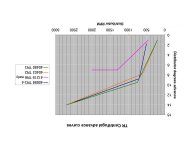Online
Hi All,
I’m having Joe Curto rebuild my carbs off my 1957 TR3, while they run OK, they do leak and have been sitting stored for almost 30 years. I’ve attempted to fix the leaks by replacing the jet seals, but figure I might as well get the whole shebang rebuilt and spiffed up while the car is dormant (I also need to replace other rubber parts under the bonnet and check the cooling system).
My question is this: When Joe sends back my carbs, what else do I need to do/repair/replace in order to make sure everything is running correctly? Timing? Condensor, points, plugs? New vacuum tube (mine is a metal/rubber/metal pipe)?
Thanks in advance for the collective advice.
I’m having Joe Curto rebuild my carbs off my 1957 TR3, while they run OK, they do leak and have been sitting stored for almost 30 years. I’ve attempted to fix the leaks by replacing the jet seals, but figure I might as well get the whole shebang rebuilt and spiffed up while the car is dormant (I also need to replace other rubber parts under the bonnet and check the cooling system).
My question is this: When Joe sends back my carbs, what else do I need to do/repair/replace in order to make sure everything is running correctly? Timing? Condensor, points, plugs? New vacuum tube (mine is a metal/rubber/metal pipe)?
Thanks in advance for the collective advice.

 Hi Guest!
Hi Guest!

 smilie in place of the real @
smilie in place of the real @
 Pretty Please - add it to our Events forum(s) and add to the calendar! >>
Pretty Please - add it to our Events forum(s) and add to the calendar! >> 

